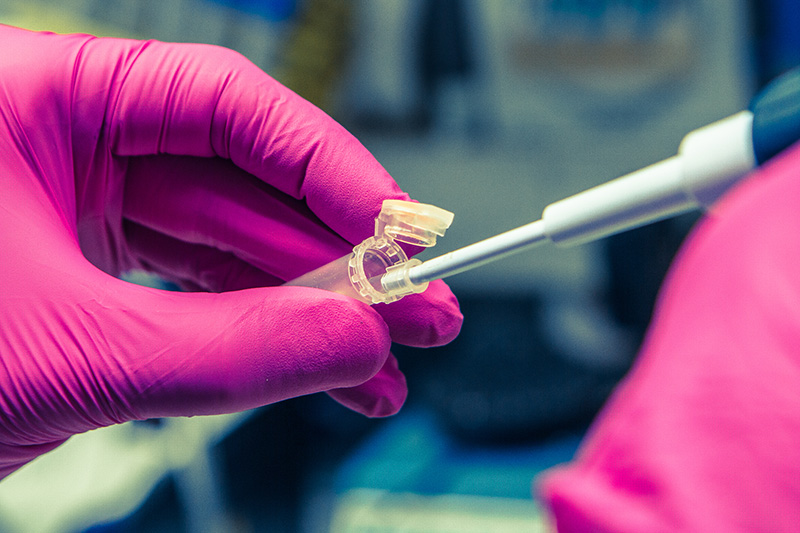Understanding Cancer

A Cancer diagnosis is dreaded and feared yet rarely understood. Even as cancer cases in India and across the world are poised to grow, there continues to be a sense of mystery around it with very little understanding of the causes and cures for an ailment commonly referred to as the Big ‘C.’ A cancer diagnosis is typically followed by intense periods of anxiety, stress, and fear for the patient as well as a caregiver. Cancer fighters recall feelings of shock followed by anger and denial when their cancer is first discovered mostly because of the myths surrounding it.
The questions abound and range from “How can this happen to me?” to “I don’t have any bad habits so why me?” and is inevitably followed by that looming unspoken query, “Can I survive this?” While these questions besiege patients and caregiver, Doctors, Oncologists and Cancer support groups reassure us that a cancer diagnosis is not a death sentence. Given the right circumstances, one can control and even conquer Cancer. Accurate information and a better understanding about Cancer will certainly help reduce negativity around it so that it can be treated like other health conditions. ‘Cancer fighters’ and ‘Cancer thrivers’ have shared their journey with us in the course of this research and echoed the importance of the right information and a stress-free frame of mind to get through the long drawn treatment and overcome the Big ‘C’.
Did You Know?
The Greek word ‘Oncos’ and ‘Carcinos’ are attributed to Hippocrates and refer to a ‘benign swelling’ and a ‘malignant swelling’ respectively.
What is Cancer?
Cancer, a word surrounded by much fear and plenty of uncertainty, refers to an uncontrolled growth of cells that invade and damage normal tissue. These cells may form a mass called ‘tumor’ which could be malignant or benign. A malignant tumor grows and spreads to other parts of the body while a benign tumor could grow but won’t spread.
Signs and Symptoms
Cancer typically distorts normal organs, nerves and blood vessels causing symptoms related to that specific body part. One of the first places that cancer spreads is the lymph nodes – those bean-shaped organs located in clusters in the neck, groin and under the arms.
Though generalized symptoms like fever, fatigue and weight loss are common in cancers that have spread beyond their site of origin it is the size and aggressiveness of cancer that determines its symptoms.
Types of Cancer
- Carcinomas – These are the most common type of cancer and begin in the skin or the tissue that covers the surface of internal organs and glands. Carcinomas usually form solid tumors.
- Sarcomas – These begin in the tissues that support and connect the body. A sarcoma can develop in fat, muscles, nerves, tendons, joints, blood vessels, lymph vessels, cartilage, or bone.
- Leukemia – These are cancer of the blood and begin when healthy blood cells change and grow uncontrollably.
- Lymphomas – This is cancer that begins in the lymphatic system. The lymphatic system is a network of vessels and glands that help fight infection.
Risk Factors
Even though over 75 percent of cancer cases are diagnosed in people aged 55 or older, increased age alone is not a risk factor for cancer. Statistics show that 5 to 10 percent of cancers are genetically inherited and those cancers tend to occur earlier in life.
Risk factors could include genetics (the BRCA genes, for example) lifestyle (such as smoking, diet, and sun-tanning), environmental exposures or the presence of harmful substances. Viral and bacterial infections also lead to certain cancers, such as the hepatitis virus in liver cancer, Helicobacter pylori in stomach cancer and the HPV virus in cervical cancer.
Stages of Cancer
Stage 0: Cancers at this stage are identified according to the location where they initially emerged and multiplied with the resulting tumor not have spread to nearby tissues. The prognosis for Stage 0 cancer is very good and boosting the immune system may reverse cancer.
Stage 1: Small cancerous tumors may have spread to nearby tissue but not beyond, such as the bloodstream or lymph system. “Early stage” cancer prognosis is also quite good with healthy changes preventing its return.
Stage 2 and 3: “Regional spread” indicates that cancer has expanded and embedded into the surrounding tissue. Even though this stage may cause concern, cancer has not spread to other organs in the body.
Stage 4: When cancer spreads from the initial site to other organs or areas of the body, it is referred to as “distant spread” cancer, advanced cancer, or metastatic cancer. Metastasis refers to the spread of cancer cells from the place where they first formed to another part of the body.
Did You Know?
While there is so much fear associated with Cancer, the statistics are not completely hopeless.
1. Nearly 70% of people diagnosed with cancer all over the world live for more than five years.
2. Over 85% of cases of childhood cancer are curable.
3. Even the most resistant cancers, like melanoma, respond to immune-modulating treatments.
Cancerism
Cancer survivors often battle stigma that can be removed through awareness. Noted oncologist Dr Amish Vora of HOPE Oncology clinic in New Delhi cautions against ‘Cancerism’ which is worse than racism and sexism as it is tough to pinpoint. “Cancer is not infectious yet people avoid those who are diagnosed with it and patients often find it difficult to socialize. They may be discriminated against during job interviews or even in relationships,” explains Vora.
Fact Sheet
According to the World Health Organization, the most common types of cancer that kill men in order of frequency are lung cancer, stomach cancer, liver cancer, colorectal cancer and oesophageal cancer. WHO statistics say that the five most common cancers that kill women in order of frequency are breast cancer, lung cancer, stomach cancer, colorectal cancer, and cervical cancer. According to Specialist Oncologist Dr (Col.) R Ranga Rao, 17 lakh new patients are being diagnosed with cancer every year in India which ranks 3rd in cancer cases after China and the US. The data from National Institute of Cancer Prevention Research (NICPR) reports that for every two women newly diagnosed with breast cancer, one woman dies of it in the country, and almost half million deaths happen due to ignorance about the disease. One woman dies of cervical cancer every 8 minutes in India. Nearly one-third of cancers are caused due to tobacco use while alcohol and tobacco together pose higher risks of developing oral and other cancers.
Globocan’s worldwide data states says that there were 14.1 million new cancer cases, 8.2 million cancer deaths, and 32.6 million people living with cancer within 5 years of diagnosis in 2012. 57% (8 million) of those new cancer cases, 65% (5.3 million) of the cancer deaths, and 48% (15.6 million) of the 5-year prevalent cancer cases occurred in the less developed regions. The overall age-standardized cancer incidence rate is almost 25% higher in men than in women with rates of 205 and 165 cases per 100 000 person-years, respectively.
Anti Cancer Diet
Food has an important link to diseases and the focus on building immunity to prevent or to fight cancer (during Chemotherapy) has resulted in research into plant-based diets that seem to help prevent cancer. Some plant chemicals fight cancer cells directly, while others promote a healthy immune system to reduce cancer risk. Fruits, vegetables, chocolate, tea, and wine are considered beneficial as they contain polyphenols. Spices and herbs rich with flavonoids and carotenoids also reduce oxidation and inflammation thus providing multiple benefits.
To read more on Cancer, click on the link below,




